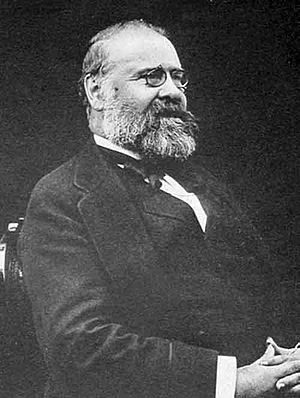Georges Rayet facts for kids
Georges-Antoine-Pons Rayet (born December 12, 1839 – died June 14, 1906) was an important French astronomer. He made significant discoveries, including a special type of star known as a Wolf–Rayet star. He also helped set up and lead a major observatory in France.
Early Life and Work
Georges Rayet was born in Bordeaux, France. He was a very bright student and later studied at the famous École Normale Supérieure in Paris. After finishing his studies, he began working at the Paris Observatory in 1863.
At the Paris Observatory, Rayet didn't just study stars. He also worked on meteorology, which is the study of weather. However, his main passion was astronomy. He became an expert in a new field called spectroscopy. This science helps astronomers study the light from stars to learn what they are made of and how they move.
Discovering New Stars
One of Georges Rayet's most famous achievements happened in 1867. He worked with another astronomer named Charles Wolf. Together, they discovered a new and unusual type of star. These stars were later named Wolf–Rayet stars in their honor.
Wolf-Rayet stars are very hot and bright. They are much bigger than our Sun and lose a lot of their material into space very quickly. Studying these stars helps scientists understand how massive stars live and die.
Leading the Bordeaux Observatory
Georges Rayet was not only a researcher but also a leader. He was the founder and first director of the Bordeaux Observatory. He led this important observatory for more than 25 years, until his death in 1906. Under his leadership, the Bordeaux Observatory became a key place for astronomical research in France.
In recognition of his important work in astronomy, Georges Rayet received the Janssen Medal from the French Academy of Sciences in 1891. This was a high honor for his contributions to science.
See also
 In Spanish: Georges Rayet para niños
In Spanish: Georges Rayet para niños


